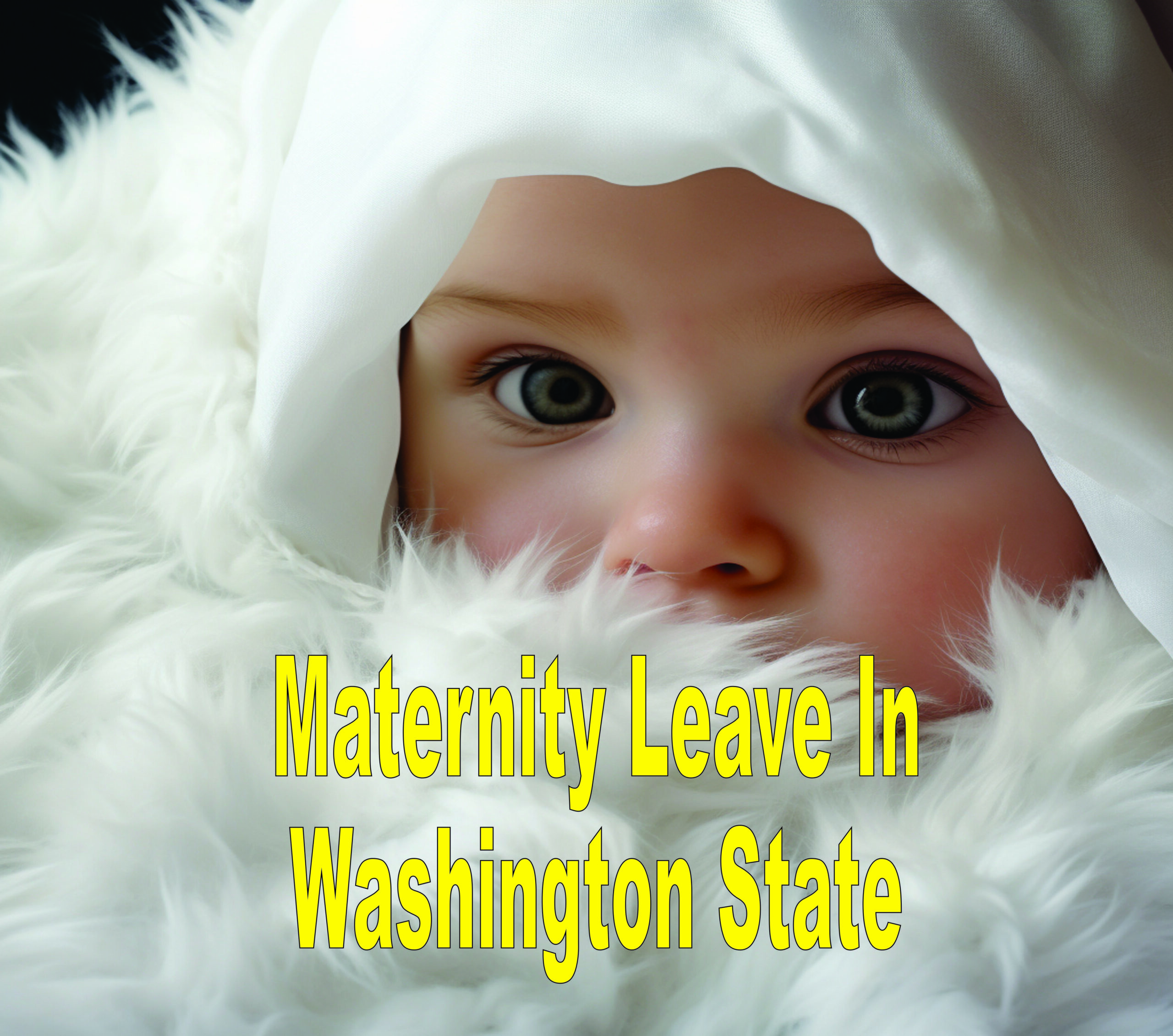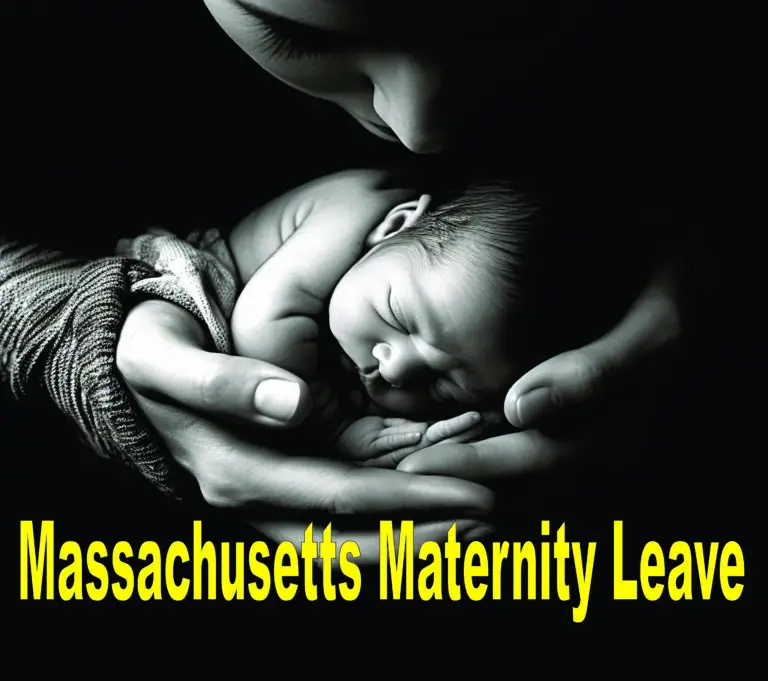Maternity Leave In Washington State

Last Updated on May 23, 2024 by Kathy
Are you an expectant parent or simply interested in understanding the rights and benefits afforded to working parents in Washington State? If so, this comprehensive guide to maternity leave in the state will provide you with the information you need.
Washington sets an impressive standard for supporting working parents, guaranteeing paid time off for pregnancy, childbirth, and parenting through its own version of the Family and Medical Leave Act (FMLA).
In this article, we will delve into the intricacies of Washington’s FMLA, exploring eligibility requirements, qualifying events, types of leave benefits, and the maximum duration of paid family and medical leave. Additionally, we will discuss the unique provisions of Washington’s FMLA, such as its broad definition of family and the availability of bereavement leave.
Whether you’re looking to navigate your own maternity leave or simply want to stay informed, this article will serve as your comprehensive guide to maternity leave in Washington State.
What is Paid Family and Medical Leave Program in Washington State?
If you’re a working parent in Washington State, you’ll be relieved to know that Washington’s Paid Family and Medical Leave Program provides much-needed support and financial security during those crucial moments in your family’s life.
This program is designed to offer paid leave for eligible employees who experience qualifying events such as pregnancy complications, the birth or adoption of a newborn child, or the need to care for a family member with a serious health condition.
As a pregnant employee, you can use this program to receive paid time off for prenatal care, postnatal care, and recovery from childbirth.
By utilizing this program, you can receive financial support and health benefits while taking time off to focus on your well-being and the well-being of your family.
Who Qualifies for the Paid Maternity Leave Program?
Employees who have worked at least 820 hours in Washington State during the qualifying period are eligible for the paid family and medical leave program. This means that if you have met this requirement, you can take advantage of the benefits provided by Washington’s Family and Medical Leave Act (FMLA).
The program offers paid leave for various reasons, including health conditions, pregnancy, childbirth, and family care. To further understand who qualifies for the program, let’s take a look at the following qualifying events:
- Serious health conditions preventing work
- Need to care for a family member with a serious health condition
- Pregnancy and recovery from surgery
- Child bonding
- Birth or adoption of a child
- Placement of a foster child
- Military exigency leave
- Care for a covered service member
- Bereavement leave

As you can see, Washington’s FMLA program covers many situations, ensuring that employees can take time off to address their health needs or care for their loved ones. It’s important to note that additional requirements may be specific to each type of qualifying event. If you meet the eligibility criteria and have experienced one of these events, you may be eligible for paid leave under Washington’s FMLA.
You can also check the Benefits Guide to help you better understand the qualifications of the program.
How Long is the Duration of Paid Maternity Leaves in Washington State?
Under the Washington State Family and Medical Leave Act, eligible employees can take a generous period of time off for maternity leave.
The length of your paid maternity leave will depend on various factors, but you can receive up to 12 weeks of leave to bond with your child after birth. This period of absence from work allows you to focus on your new addition to the family and ensure a smooth transition into parenthood.
It’s important to note that paid maternity leave in Washington State is not considered a temporary disability. However, pregnant individuals can take up to 12 weeks of paid medical leave for prenatal care. This ensures you have the time and resources to prioritize your health and well-being during pregnancy.
Additionally, the Washington State Family and Medical Leave Act provides benefit continuation, meaning that your healthcare coverage will continue during your absence. This ensures that you have access to necessary medical care and support throughout your maternity leave.
How Much Will I Get from Paid Maternity Leave Benefit?
During your period of absence, you can anticipate receiving a weekly benefit amount based on a percentage of your wages, ensuring financial support for your growing family.
The amount of your paid maternity leave benefit in Washington State is determined by the Family and Medical Leave Act (FMLA). The FMLA provides two types of paid leave benefits: medical leave and family leave. The benefit amounts are calculated based on a percentage of your wages, with a maximum benefit amount of $1,327 per week in 2022.
To estimate the exact amount you will receive, you can use the benefits premium calculator the Washington State Employment Security Department provides.
To give you a better idea of how the benefit calculation works, here are two scenarios:
1. If you’re taking medical leave due to a pregnancy or childbirth-related condition, you can receive up to 12 weeks of paid leave. The benefit amount will be calculated based on a percentage of your wages, ensuring you have financial support during your period of disability associated with pregnancy.
2. If you take family leave to care for a dependent child, you can also receive up to 12 weeks of paid leave. The benefit amount will be calculated based on a percentage of your wages, providing financial support while you take time off to bond with and care for your child.
It’s important to note that the exact benefit amount may vary depending on your specific circumstances and the length of your claim period. However, the FMLA guarantees that you’ll receive a percentage of your wages during your paid family and medical leave in Washington, offering financial stability during this important time in your life.
Does This Also Apply If I Adopt or Foster A Child or Use A Surrogate?
If you choose to adopt, foster, or use a surrogate, you can still receive paid family and medical leave benefits in Washington State. The Washington State Family and Medical Leave Act (FMLA) extends its coverage to include these situations.
As an adoptive parent, you can take paid leave to bond with your newly adopted child. This includes both domestic and international adoptions.
If you are fostering a child, you are also eligible for paid family and medical leave benefits. This allows you to take time off to care for the child and establish a bond.
Additionally, if you use a surrogate to have a child, you can take paid leave for pregnancy or childbirth-related reasons and for bonding with the child after birth.
To qualify for these benefits, you must meet the same eligibility requirements as other employees seeking paid family and medical leave. This includes working at least 820 hours in Washington during the qualifying period.
You may also need to provide medical certification or documentation related to the adoption, foster care placement, or surrogate arrangement.
It’s important to note that Washington’s paid family and medical leave program, known as the Washington Paid Family and Medical Leave (PFML), is separate from other family care leaves that may be available to adoptive parents, foster parents, or individuals using a surrogate.
The PFML program provides financial support through family leave insurance, ensuring that you can take the time off you need without facing financial hardship.
Can My Spouse Also Avail of the Benefits?
Your spouse can also take advantage of these benefits under Washington’s Family and Medical Leave Act (FMLA). Here are some key points to keep in mind:
– If your spouse has a serious health condition and needs care, they can take medical leave. This can be used for their health care treatment or for a sick spouse.
– Your spouse can use family leave to bond with a new child, whether through adoption or foster care. They can also use it if they use a surrogate to have a child.
– If your spouse needs to take time off due to domestic violence, they may be eligible for leave. This can include seeking legal help, obtaining medical care, or staying at a domestic violence shelter.

– The amount of leave your spouse can take depends on the specific circumstances. They can take up to 12 weeks of family or medical leave, 16 weeks if both are taken, and 18 weeks if there are additional complications from pregnancy.
It’s important to note that these benefits are available to eligible employees, and certain conditions must be met to qualify. Your spouse should meet the employment eligibility requirements and experience a qualifying event. They should also make sure to follow the proper procedures for requesting and taking leaves of absence.
Are There Any Restrictions in the Usage of Paid Maternity Leaves?
In addition to the benefits available to employees under Washington’s Family and Medical Leave Act (FMLA), it’s important to understand any restrictions that may apply when it comes to using paid maternity leave.
While the FMLA in Washington State provides paid leave for pregnancy, childbirth, and parenting, there are certain limitations to remember.
Firstly, it’s worth noting that the FMLA covers various family and medical purposes. This means that while the leave can be used for the birth or adoption of a child, as well as for the care of a spouse, children, parents, siblings, and grandparents, it can also be used for serious health conditions preventing work or the need to care for a family member with a serious health condition. This flexibility allows employees to use their paid maternity leave for various situations.
However, it’s important to remember that the FMLA benefits in Washington State have specific guidelines and restrictions. For example, employers cannot require employees to use accrued sick leave or other paid time off before using their family and medical leave. Additionally, employees cannot use their paid leave for their own disability or illness unless it meets the criteria for a serious health condition under the FMLA.
Understanding these restrictions will ensure that employees can make the most of their paid maternity leave while adhering to the guidelines set forth by the Family and Medical Leave Act in Washington State.
Can You Avail of Paid Maternity Leave Program in Conjunction with Other Benefits?
You can combine the paid maternity leave program with other benefits to maximize your time off and ensure a smooth transition back to work.
Washington’s family and medical leave program allows eligible employees to receive paid leave for qualifying medical events, including pregnancy and childbirth.
In addition to the paid leave benefits provided by the program, some employers may offer voluntary plans that can be used in conjunction with the family and medical leave program. These voluntary plans can provide additional financial support during your maternity leave, such as supplemental income or compensation for certain expenses related to pregnancy and childbirth.
It’s important to note that while you can combine the paid maternity leave program with other benefits, certain eligibility requirements or limitations may apply. For example, you may need to meet certain criteria or submit additional documentation to qualify for specific benefits.
Additionally, the duration and availability of these benefits may vary depending on your employer’s policies and the specific terms of the voluntary plans. To ensure that you fully understand the options available to you, it’s recommended to consult with your employer’s human resources department or benefits administrator.
Combining the paid maternity leave program with other benefits can provide you with additional support during this important time in your life. Whether it’s financial assistance, mental health resources, or compensatory time off, taking advantage of these benefits can help ease the transition back to work and ensure that you have the necessary support to balance your family responsibilities and career.
Remember to stay informed about the eligibility requirements, benefit continuation requirements, and job protection provisions to make the most of your combined family and medical leave benefits.
How to Apply for Paid Maternity Leaves?
Now that you know the eligibility requirements and benefits of Washington State’s Family and Medical Leave Act (FMLA), let’s discuss how to apply for paid maternity leave.
Applying for paid maternity leave under Washington’s FMLA is a straightforward process that ensures you receive the necessary time off and financial support during this important time in your life.
1. Familiarize yourself with the FMLA: Before applying for paid maternity leave, it’s crucial to understand the provisions and requirements of Washington’s FMLA. This includes knowing the duration of leave you’re entitled to, the types of leave available (medical leave and family leave), and the conditions for recovery that qualify for leave.
2. Notify your employer: As soon as you know you’ll need to take maternity leave, inform your employer. It’s recommended to provide written notice stating your leave’s expected start and end dates. Make sure to include any relevant medical documentation to support your request.
3. Meet the waiting period: Washington’s FMLA requires employees to complete a waiting period of eight calendar days before receiving paid leave benefits. During this waiting period, you can utilize other available benefits, such as sick leave or vacation time, to cover your absence.
4. Coordinate with your employer regarding benefits: While on maternity leave, you may be eligible to continue receiving certain healthcare benefits as part of your employer’s benefit coverage. Coordinate with your employer to understand the specific benefits available to you and any necessary paperwork or procedures to ensure continuous coverage.
By following these steps and familiarizing yourself with the FMLA, you can successfully apply for and receive paid maternity leave in Washington. Remember, taking the time to care for yourself and bond with your newborn is important for your well-being and is supported by state laws prioritizing family leave.
You can also use this Application Checklist to help you navigate Washington’s PFML program requirements.
Who or Where Should I Contact If I Have More Questions About Washington State’s PFML?
If you want to know more about Washington’s Paid Family and Medical Leave program, call their Help Center at (833) 717-2273.
Conclusion
In conclusion, Washington State’s maternity leave program offers comprehensive support for working parents. The state’s Family and Medical Leave Act version guarantees paid time off for pregnancy, childbirth, and parenting, going beyond the federal FMLA.
Eligibility requirements are in place to ensure that employees can access these benefits, and the program covers a range of qualifying events, including adoption and surrogacy.
The duration of paid maternity leave in Washington State is generous, allowing for ample time for parents to bond with their new child. The amount of paid leave benefits is determined based on a percentage of the employee’s average weekly wage, providing financial support during this important time.
It is worth noting that employees’ spouses are also eligible for these benefits, further enhancing support for working parents. There are minimal restrictions in the usage of paid maternity leave, allowing parents to take the time they need to care for their child.
Overall, Washington’s maternity leave program is a valuable resource for working parents, ensuring they have the support and time off needed to adjust to their new family dynamics.






